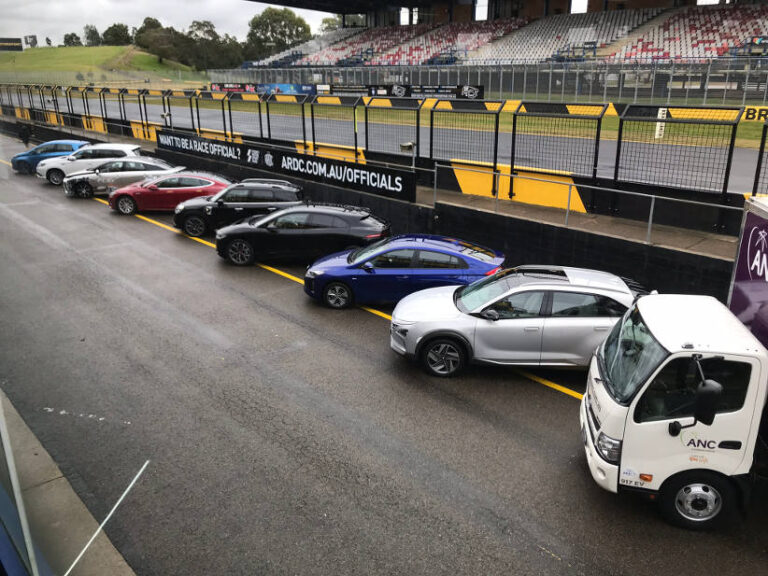Why host a fleet EV drive day?
The NSW EV Drive Day is about helping fleet buyers make informed decisions regarding their EV options in the immediate future.
A report by the Australasian Transport Research Forum (ATRF) concluded that first-hand exposure to clean vehicles has a positive impact on buyer intentions: 82 per cent of test drivers were ‘more inclined to buy a clean vehicle’ after their test drive, while 18 per cent reported ‘no change of opinion’after a test drive.
The CEFC surveyed the buying intentions of fleet buyers and managers following our first EV Drive Day, held in Victoria in 2018: 50 per cent signalled they would include EVs in their fleets within 12-24 months and 38 per cent forecast they would have more EVs within three months.
BNEF EV outlook: Australia
The Bloomberg New Energy Finance (BNEF) EV Outlook 2019 reported that Australia is the 16th largest car market in the world in terms of new cars sold, with about 17.5 million passenger cars and light commercial trucks on the road. EV sales slightly declined in 2018 to 2,176, making up approximately 0.2 per cent of new car sales in Australia.
While Australia is the 16th largest car market, it ranks 21st in terms of new EVs sold. The total number of EVs in Australia stands at about 9,100 – about 25 per cent lower than the number of EVs in New Zealand – a similar right-hand-drive car market, but about 1/7th the size of Australia.
Transport and emissions
In 2017, transport accounted for 100 million tonnes of CO2 -e or 19 per cent of Australia’s emissions,with cars and light commercial vehicles representing more than half of those emissions. Increasing the share of electric vehicles on the road will translate directly into lower emissions from fuel combustion. EV charging will add to demand for electricity, with emissions associated with charging declining over time as electricity generation switches to renewables.
The CEFC and transport
The CEFC actively supports investment to lower transport-related emissions. This includes accelerating the purchase of electric and plug-in hybrid electric vehicles, for individual, small business and fleet buyers.
Australians have traditionally been early adopters of new technology, but we’re lagging when it comesto EVs. Our research shows that we can increase the uptake of EVs in a way that benefits drivers aswell as the environment. It’s about lowering prices, bringing more models to market and creating a charging network.
CEFC – Finance for electric vehicles
The CEFC has financed a substantial share of all EVs purchases in Australia: delivering finance for more than 1,000 hybrids, battery electric vehicles and plug in hybrid electric vehicles, via its co- finance programs with major banks and non-bank lenders. Through the Clean Energy Innovation Fund, we have also invested in two Australian companies at the forefront of the EV transition:
- − Relectrify is developing and commercialising control technology that unlocks extra performance in battery systems by boosting their second-life storage capability and lifespan once they are no longer effective as electric vehicle or plug-in hybrid car batteries.
- − SEA Electric is converting medium-duty trucks and commercial vans into EVs, integrating and assembling EV drive train systems into a basic chassis and framework including the cab, fitted with the battery pack, electric motor, and other elements of the drive train of the truck.
About the CEFC
The CEFC is responsible for investing $10 billion in clean energy projects on behalf of the Australian Government. We help lower Australia’s carbon emissions by investing in renewable energy, energy efficiency and low emissions technologies. We also support innovative start-up companies through the Clean Energy Innovation Fund. Across our portfolio, we invest to deliver a positive return for taxpayers.






